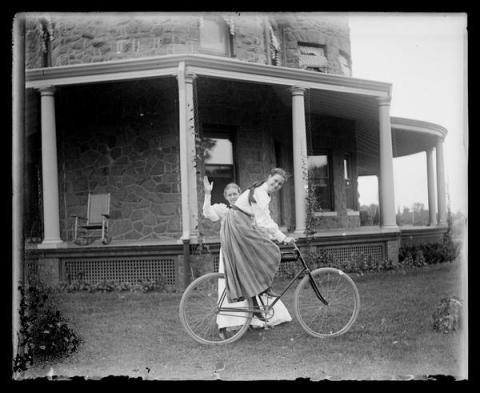
This week marks a moment in transportation history; on June 26, 1819 the U.S. Patent Office issued its first patent for a velocipede, a bicycle-like invention created by William K. Clarkson, Jr. of New York.
While he received the first U.S. patent, Clarkson wasn't the first to build a predecessor to the modern bicycle. For example, in 1791, Comte de Sivrac's celerifere enjoyed brief popularity in Paris, despite the fact that its wheels did not pivot, which prevented riders from steering. And, in 1817, Karl von Drais, a German state forester built the 'Draisine', a wooden device a padded seat and pivoting front wheel. The Draisine, or 'Dandy Horse' had no pedals - it moved only by the rider pushing their feet against the ground, making it an amusement rather than a serious means of transportation.
By 1819, a small number of manufacturers had begun manufacturing velocipedes, which did use pedals to propel the rider, though they were mounted to the front wheel of the device. In the United States, these manufacturers included M. Stewart in Baltimore and David and Rogers of Troy, New York. The first U.S. Patent (No. 59,915) for a modern bicycle would be issued in November 1866, to Pierre Lallement. The word 'bicycle' was coined shortly thereafter, in 1868.
And by 1896, the bicycle came to be prominently featured in this glass negative photograph, taken outside St. Amour, the Wilmington home of Mary Belin du Pont (1839-1913), built following the death of her husband Lammot du Pont (1831-1884) in a chemical plant explosion. One of her sons, Pierre S. du Pont (1870-1954) helped supervise its construction, another, Irénée (1876-1963), designed its gardens, and yet another, Lammot (1880-1952), purchased the home following his mother's death.
This item is part of a series of images documenting the family of Mary Belin du Pont's family group at St. Amour, which were then collected and maintained by Pierre S. before becoming part of the Hagley Library's collections. The P.S. du Pont photographs (Longwood) (Acc. 1969.002) collection includes nearly 70 photographs and other materials from the du Pont family and friends' lives, as well as over 1,000 images documenting the development and growth of Pierre S. du Pont's Longwood Gardens estate and botanical garden. Click here to visit it online now.

